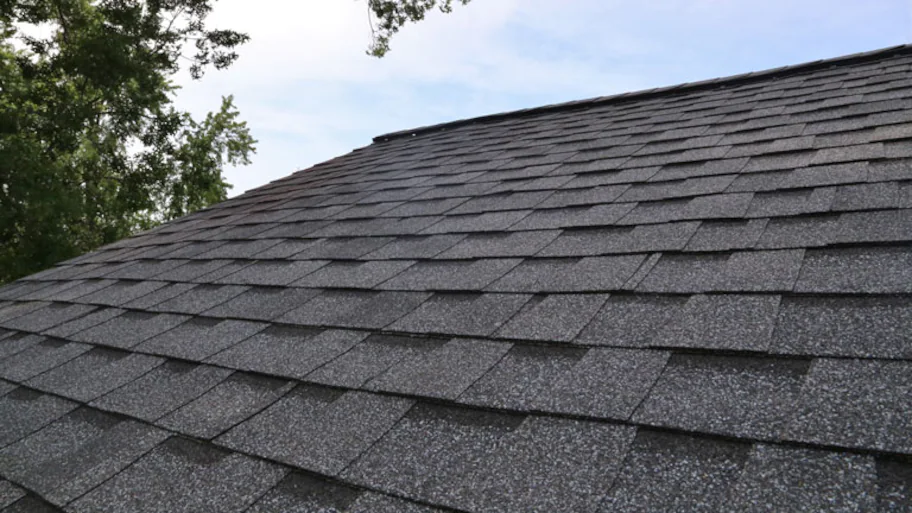Vital Concerns to Ask Gainesville Roofing Companies Before Employing
Vital Concerns to Ask Gainesville Roofing Companies Before Employing
Blog Article
Finest Practices for Ensuring Appropriate Roofing Air Flow
Making sure appropriate roof covering air flow is crucial for the durability and performance of a roof. A balanced consumption and exhaust vent ratio, commonly 1:300, plays an essential role, with consumption vents ideally put at the lower side of the roofing for great air entry and exhaust vents at the top for cozy air exit. Normal inspections to identify clogs and preserve clear air movement are paramount. Moreover, maintaining insulation far from vents is vital to avoid airflow restriction. Understanding these fundamental components establishes the phase for more thorough understandings right into installation and maintenance practices that can considerably boost your roof's efficiency.
Understand Air Flow Fundamentals
Effectively understanding air flow fundamentals is necessary for ensuring the longevity and performance of roof covering systems. Efficient ventilation reduces dampness build-up and temperature level extremes in the attic room, both of which can bring about significant architectural damages with time. A well-ventilated roof assists in avoiding typical problems such as mold growth, timber rot, and ice dams, which can compromise the honesty of the roof products and the underlying frameworks.
The primary goal of air flow is to assist in the motion of air, permitting for a constant exchange between the exterior and indoor environments. This equilibrium is accomplished via a mix of intake and exhaust vents that work with each other to maintain ideal air movement. Intake vents, commonly situated along the eaves or soffits, allow fresh air to get in the attic room area, while exhaust vents, typically positioned at or near the roof covering ridge, allow warm, humid air to escape.
Key variables affecting the efficiency of roof covering ventilation consist of appropriate placement, sufficient sizing, and guaranteeing that both consumption and exhaust vents are unhampered. Regular examination and upkeep are essential to determine potential clogs, damage, or inefficiencies in the air flow system, consequently safeguarding the roof's efficiency and longevity.
Kinds Of Roofing Vents
Roof vents play a crucial duty in maintaining reliable attic air flow and, by expansion, the total health and wellness of the roof covering system. Numerous types of roof covering vents are available, each with unique benefits customized to particular roofing requirements.

Soffit vents are mounted under the eaves and operate in tandem with roof covering vents to ensure a well balanced consumption and exhaust system. By permitting cooler air to get in from below, soffit vents help with the expulsion of hot air with top vents. Gable vents, located on the exterior walls of the attic, offer another effective service, specifically in homes with gable roof coverings.
Analyze Your Current Air Flow

Following, consider the age and problem of your roof covering materials and air flow parts. Older systems may not abide with current building ordinance or may have degraded with time, reducing their effectiveness. Conduct a comprehensive examination to determine any type of indications of wear and tear, such as corrosion, damage, or gaps that could jeopardize the system's performance.
Additionally, measure the attic room temperature and humidity levels. High temperature levels and humidity can indicate inadequate air flow - roofing companies gainesville florida. Use a hygrometer and thermometer to acquire exact analyses, contrasting them with outdoor conditions. Relentless discrepancies recommend potential problems that need addressing.
Setup Best Practices
Reliable installment of roof ventilation systems is extremely important for making certain optimal performance and durability. Correct installment begins with recognizing the specific ventilation needs of the roofing system and the building it covers. This includes determining the correct ratio of intake to tire vents, normally sticking to the 1:300 rule, which stipulates one square foot of air flow for each 300 square feet of attic floor space.

Intake vents must be installed at the roofing's lower side, often in the soffits, to enable cool air to get in. Exhaust vents, on the other hand, ought to be mounted near or at the roofing system's peak to assist in the leave of cozy, damp air.
Seal all air vent links thoroughly to stop air leakages and potential water infiltration. Usage top notch products and follow producer guidelines to make certain resilience and efficiency. Furthermore, integrating ridge vents with baffles can substantially boost air movement performance by protecting against wind-driven rainfall and snow from entering the attic.
Ultimately, exact installment of roof covering air flow systems alleviates prospective concerns such as mold and mildew growth, ice dams, and architectural damages, making sure the roofing's integrity and the building's general wellness.
Routine Upkeep Tips
Consistency in maintenance techniques is basic to making sure the lasting effectiveness of roof ventilation systems. Regular evaluations are vital, preferably carried out biannually-- in the springtime and loss. During click to read these examinations, ensure that vents are devoid of debris, nests, and other obstructions that could impede air movement. Inspect for any type of indicators of dampness accumulation or mold, as these can suggest incorrect ventilation or leaks (roofing companies in gainesville florida).
Utilize a soft brush or a vacuum cleaner to eliminate dust and debris from consumption and exhaust vents. Be careful not to damage the air vent displays or louvers during the process.
Appropriate insulation is just as essential. Make sure that attic room insulation does not block the vents, as this can severely restrict airflow. If any type of insulation has actually shifted or worked out, reposition or change it to keep an effective barrier.
Lastly, replace any kind of damaged or missing out on parts immediately. Broken vents, broken roof shingles, or tatty blinking can all add to poor ventilation and should be addressed right away. Regular maintenance makes certain that the roof air flow system works ideally, therefore prolonging the life expectancy of the roofing itself.
Conclusion
Guaranteeing correct roof ventilation is extremely important for preserving the performance and toughness of a roof covering system. Adherence to the 1:300 intake and exhaust air vent proportion, paired with the critical placement of vents, is necessary.
A balanced consumption and exhaust air vent proportion, typically 1:300, plays a crucial function, with intake vents ideally positioned at the lower edge of the roof for trendy air entry and exhaust vents at the height for warm air exit. Intake vents, commonly located along the soffits or eaves, allow fresh air to get in the attic area, while exhaust vents, usually located at or near the roofing system ridge, make it possible for warm, humid air to get away.
Soffit vents are set up under the eaves and job in tandem with roof covering vents to ensure a balanced consumption and exhaust system. By allowing cooler air to enter from below, soffit vents help with the expulsion of warm air with top vents. Adherence to the 1:300 consumption and exhaust air vent ratio, paired with learn this here now the critical placement of vents, is vital.
Report this page